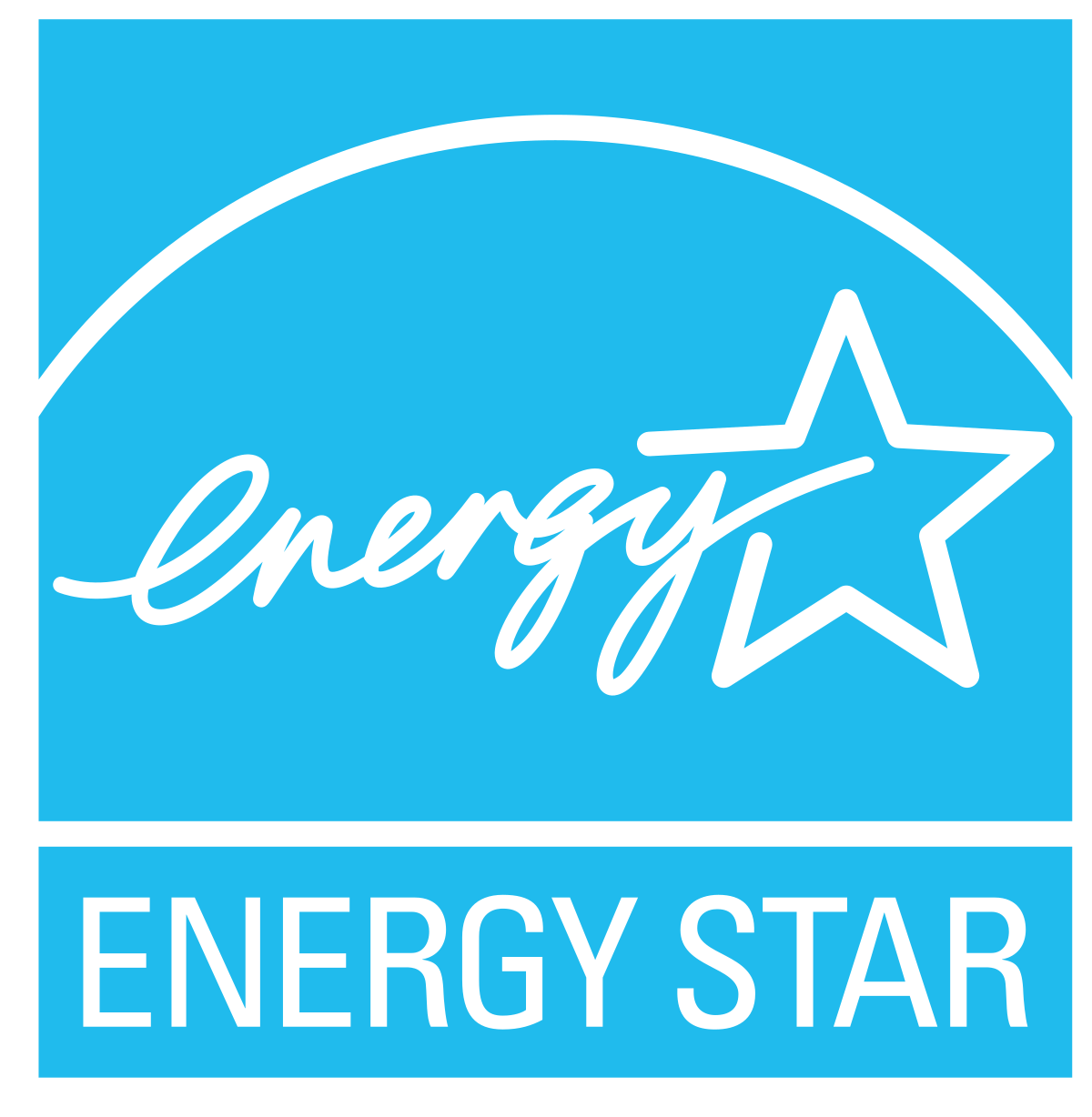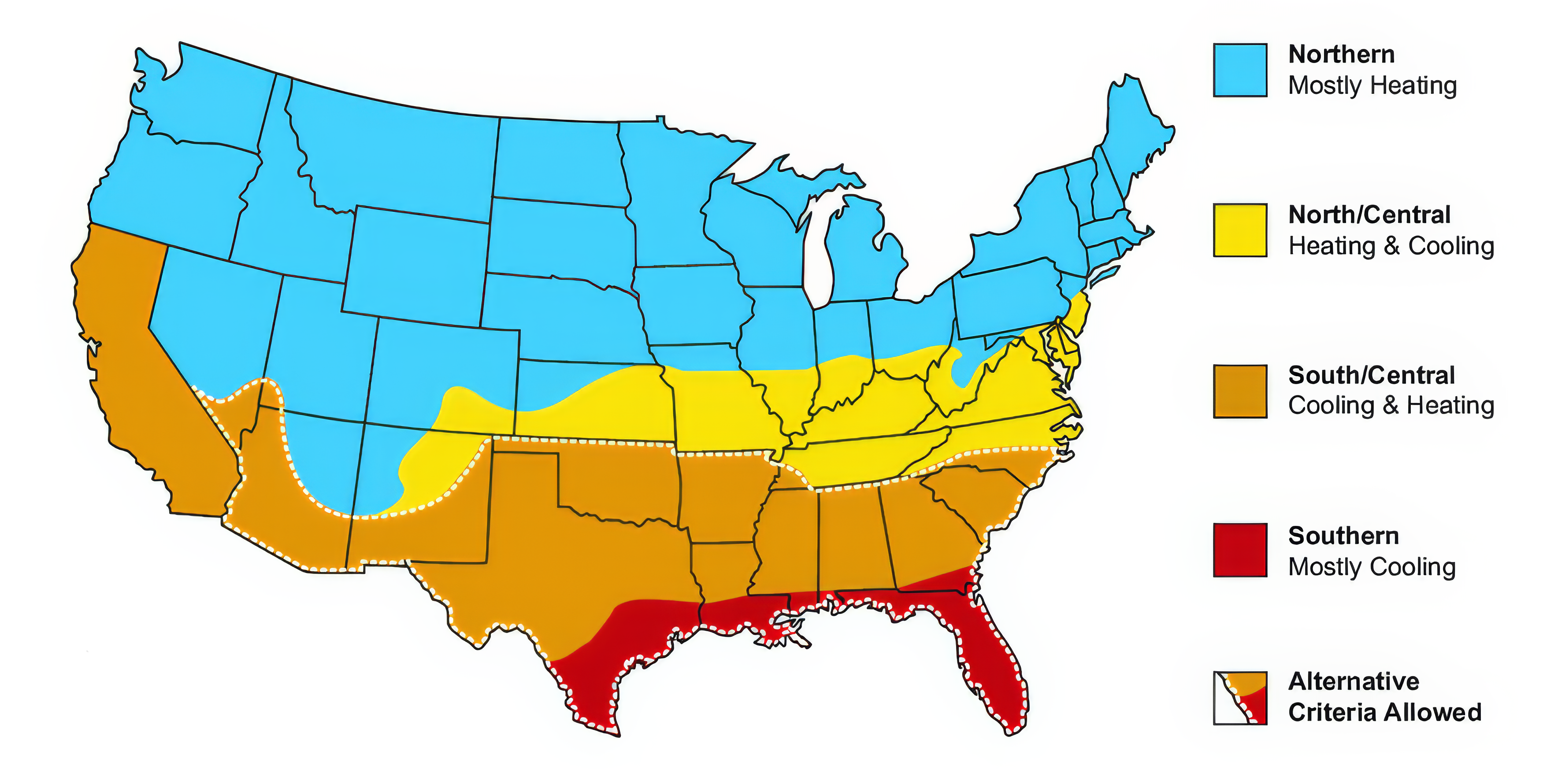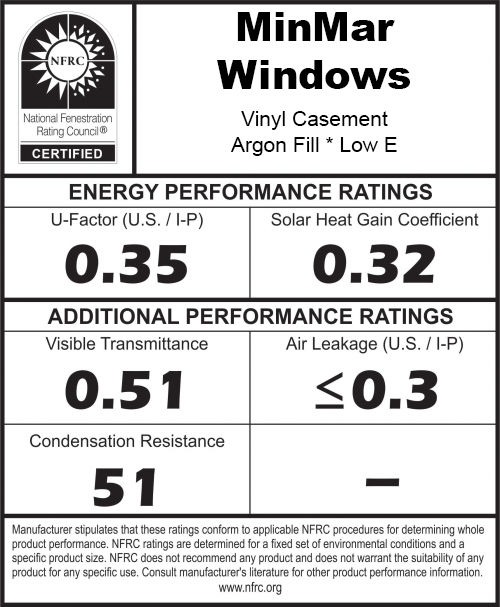Window & Door Energy Ratings
The Science Behind Energy Efficiency
Minmar windows and doors are engineered to maximize energy efficiency, helping you maintain comfortable indoor temperatures while reducing energy consumption. Understanding energy ratings helps you make informed decisions about which products are right for your home and climate.
U-Factor
U-Factor measures how well a product prevents heat from escaping your home. Lower U-Factor values indicate better insulation performance.
Minmar's premium windows achieve U-Factors as low as 0.25, exceeding ENERGY STAR® requirements in all climate zones.
Solar Heat Gain Coefficient
Solar Heat Gain Coefficient (SHGC) measures how well a product blocks heat from the sun. Lower SHGC values indicate better shading ability.
For homes in warm climates, a lower SHGC helps reduce cooling costs. In cold climates, a higher SHGC can be beneficial for passive solar heating.
Visible Transmittance
Visible Transmittance (VT) measures how much light comes through a product. Higher VT values indicate more daylight entering your home.
Minmar's optimized glass packages balance light transmission with energy performance, providing bright interiors without sacrificing efficiency.
Air Leakage
Air Leakage (AL) measures how much air passes through cracks in the window or door assembly. Lower AL values indicate better sealing performance.
Minmar's precision engineering and multi-point weather sealing systems minimize air infiltration for enhanced comfort and energy savings.
Condensation Resistance
Condensation Resistance (CR) measures how well a product resists the formation of condensation on the interior surface. Higher CR values indicate better resistance to condensation.
Minmar windows with warm-edge spacer technology and thermal breaks achieve high CR ratings, reducing the potential for condensation, frost, and related issues.
Design Pressure
Design Pressure (DP) measures the structural strength of a window or door against wind and water penetration. Higher DP ratings indicate stronger products.
Minmar windows are rigorously tested to achieve high DP ratings, ensuring reliable performance even in challenging weather conditions and coastal environments.

ENERGY STAR® Certified Products
Minmar is a proud ENERGY STAR® partner, offering windows and doors that meet or exceed the program's strict energy efficiency guidelines set by the U.S. Environmental Protection Agency.
Products that earn the ENERGY STAR® label help you save energy and money without sacrificing performance. ENERGY STAR® certified windows and doors can reduce your home energy bills by an average of 12% compared to non-certified products.
All Minmar windows and doors are tested and certified by the National Fenestration Rating Council (NFRC), ensuring that our performance claims are independently verified.
Performance Specifications by Product Line
The table below shows typical performance values for our most popular window and door series. Actual values may vary based on size, configuration, and glass package options.
| Product Series | U-Factor | SHGC | VT | AL | CR |
|---|---|---|---|---|---|
| 9000 Series Windows (Triple Pane) | 0.25 | 0.28 | 0.42 | 0.1 | 70 |
| 8000 Series Windows (Double Pane) | 0.30 | 0.28 | 0.52 | 0.1 | 65 |
| 7000 Series Windows | 0.32 | 0.27 | 0.51 | 0.2 | 62 |
| Deluxe Patio Doors | 0.31 | 0.30 | 0.58 | 0.2 | 60 |
| Premium Entry Doors | 0.30 | 0.25 | 0.40 | 0.1 | 65 |
ENERGY STAR® Climate Zones
ENERGY STAR® divides the United States into four climate zones, each with specific energy performance requirements. Minmar offers optimized glass packages for each zone, ensuring ideal performance for your specific location.

Northern Zone
- U-Factor: ≤ 0.30
- SHGC: Any
- Optimized for: Heating
- Recommended: Higher SHGC for passive solar gain
North-Central Zone
- U-Factor: ≤ 0.30
- SHGC: ≤ 0.40
- Optimized for: Balanced heating and cooling
- Recommended: Moderate SHGC for year-round performance
South-Central Zone
- U-Factor: ≤ 0.30
- SHGC: ≤ 0.30
- Optimized for: Balanced with emphasis on cooling
- Recommended: Lower SHGC to reduce cooling costs
Southern Zone
- U-Factor: ≤ 0.40
- SHGC: ≤ 0.25
- Optimized for: Cooling
- Recommended: Lowest SHGC to block solar heat gain
Understanding NFRC Labels
Every Minmar window and door comes with a National Fenestration Rating Council (NFRC) label that displays its certified performance ratings. Here's how to read and understand these labels:

NFRC Label Guide
The NFRC label provides standardized, accurate information about the energy performance of windows and doors. Each product is tested according to the same procedures, allowing you to make fair comparisons between products.
Calculate Your Potential Energy Savings
See how much you could save by upgrading to energy-efficient Minmar windows and doors in your home.
Calculate My Savings